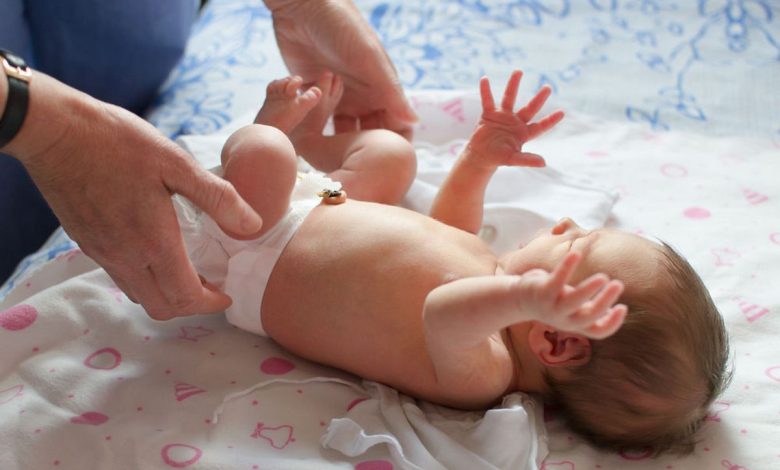Infant reflexes, inborn physiological reflexes: What's it, causes, symptoms, diagnostics, treatment, prevention

Infant reflexes; Primitive reflexes; Reflexes in infants; Tonic neck reflex; Galant reflex; Truncal incurvation; Rooting reflex; Parachute reflex; Grasp reflex
What are infantile reflexes?
Infant reflexes are infants' reactions to certain stimuli.. These reflexes are present at birth and help newborns interact with the environment and develop.. Some infant reflexes are involuntary, that is, children cannot control them. Other reflexes, like smiling and singing, can be controlled, although they often require specific cues or environmental experiences.
Reflexes are usually assessed shortly after birth., to detect any excessively weak or absent reflexes, which may indicate potential health problems. Many reflexes, such as rooting and grasping, usually disappear as, how the child grows, develops and is able to do more independently.
Reflex examples, persisting into adulthood:
- Blink reflex: blinking of the eyes when touched or when there is a sudden bright light.
- cough reflex: cough with irritation of the respiratory tract.
- Vomiting reflex: gagging when the throat or back of the mouth is stimulated.
- sneeze reflex: sneezing with irritated nasal passages.
- Yawn reflex: yawn, when the body needs more oxygen
Causes of unconditioned reflexes in a child
Infant reflexes are caused by the nervous system of the child. Nerves in a child's body activate reflexes, which promote the growth and development of the brain and body. For Example, touching the child's cheek activates the root reflex, which helps the baby find the nipple and suck on the breast.
Infantile reflexes can occur in adults, which:
- Stroke
- Brain damage
Common Infant Reflexes
Common infant reflexes include the following:
- rooting: turning the head and opening the mouth with a light touch on the cheek or lips.
- Sucking reflex: sucking movements when touching the lips or mouth.
- Catch: clasping hands, when something is placed in them.
- pacing: footsteps, when their feet are on the surface.
- Moreau reflex: child spreads arms and legs, when scared or anxious.
- tonic neck: turn head to one side, stretching the arm and leg on one side of the body and bending on the opposite side.
- Kosoglazie: eyes squint inward or outward for a short time when one or both eyes are touched.
When to see a doctor
If the infant does not show all the expected reflexes, parents should contact their pediatrician. The doctor will examine the child and determine, is there a medical problem, which could cause an abnormal reflex.
Besides, if the infant shows signs of physical or cognitive delay, parents should contact their pediatrician. Delays in reflexes or gross motor skills may be linked to underlying health problems.
Questions, that your doctor may ask
When visiting a doctor, parents should be prepared to answer such questions., as:
- When the baby was born?
- How the child eats and sleeps?
- Are there reflexes, which the child does not show?
- What kind of activities does the child like?
- It seems, the child likes, when he is being held?
Diagnosis of abnormal reflexes in a child
If the child shows any signs of abnormal reflexes, Your doctor may order additional tests, including:
- Neurological examinations. These tests are used to assess development, reflexes and movements of the child.
- Neuroimaging. These tests use x-rays., MRI or computed tomography, to help detect any structural abnormalities in the child's brain.
- Genetic testing. Genetic testing can help identify any genetic diseases, that can cause symptoms in a child.
- developmental screening. Your doctor may recommend screening tests to evaluate motor, language and cognitive development of the child.
Treatment of abnormal reflexes in a child
If the child shows signs of an abnormal reflex, The doctor's treatment plan will depend on the underlying disease. Potential treatments may include:
- Physiotherapy. Physiotherapy is often recommended, to help the child learn to control their reflexes and improve muscle strength and coordination.
- Occupational therapy. Occupational therapy may be prescribed, to help the child learn to eat properly, sleep, play and interact with the environment.
- Speech Therapy. Speech therapy can help the child communicate and may be recommended., if the child's reflexes affect his ability to speak.
- Medicines. Medications may be prescribed, to help control any underlying diseases, which can cause an abnormal reflex.
home treatment
Parents can help their child learn to control their reflexes and motor skills at home, participating in such activities, as:
- Playing with a child. Participation in such activities, like folding toys and playing hide and seek, can help develop motor skills.
- Conversation with a child. Talking to your child using simple words and gestures can help develop language and communication..
- Reading to a child. Reading to your child can help teach him new words and encourage language development..
- Providing a safe environment. Create a safer environment by eliminating hazards, such as sharp edges or objects, can help the child safely explore the space.
Prevention of abnormal reflexes in a child
Parents can help prevent delayed reflexes in babies, giving the child the necessary stimulation. This may include talking to your child and reading books to them., and ensuring it is safe, age appropriate toys. Besides, regular checkups with your pediatrician can help spot any early signs of potential delays.
Used sources and literature
Chaves-Gnecco D, Feldman HM. Developmental/behavioral pediatrics. In: Kids BJ, McIntire SC, Nowalk AJ, Garrison J, eds. Zitelli and Davis’ Atlas of Pediatric Physical Diagnosis. 8th ed. Philadelphia, PA: Elsevier; 2023:chap 3.
Schor NF. Neurological evaluation. In: Kliegman RM, St. Geme JW, Bloom NJ, Shah SS, Tasker RC, Wilson KM, eds. Nelson Textbook of Pediatrics. 21st ed. Philadelphia, PA: Elsevier; 2020:chap 608.
Walker RWH. Nervous system. In: Glynn M, Drake WM, eds. Hutchison’s Clinical Methods. 24th ed. Philadelphia, PA: Elsevier; 2018:chap 16.
